What pushes you to be the best art teacher you can be? For me, it’s taking a peek into the hearts and minds of other art teachers I admire. Often, these are teachers who have been honored at the national level for their hard work, dedication, and commitment to the field. They are not only outstanding educators but outstanding leaders as well.
I asked ten of these world-class art educators to share their best advice. Who better to learn from than those who have made a huge impact at the local, state, and national levels?
First, a note on the nomination process.
Before we dive in, let’s talk about the nomination process. Each year, the NAEA selects regional and national award winners from each division. If you are an NAEA member, you are eligible to make a nomination! It’s easy to do. Plus, when we acknowledge the hard work of our colleagues, we are doing our profession so much good.
For nomination specifics, check out the NAEA website.
Here are 10 pieces of advice from nationally recognized art teachers.
1. We teach more than art—so stay focused.
We all know studio art is only one part of what we all actually teach. Susan Gabbard, a long-time friend to art education, says this so eloquently. According to Susan, “It was my rich opportunity having a job that allowed me to instill a love and understanding of visual art and the role it has in our world. I don’t just teach art. I teach language and history, social studies, values and traditions, math, and foreign language. I help students learn to read imagery, and I meet the needs of every student.” Susan believes a great art educator, “…looks excited, is always learning, modeling, failing, curious, experimenting, collaborating, encouraging, and remains focused!”
Susan has not only received a plethora of awards, but she also served as the NAEA president from 2007 to 2009. Her most recent award was the 2017 National Art Educator, the top award given at the national level. Susan is retired after working for forty-five years teaching K-12 art in four school districts in Oklahoma and Texas.
2. Remember to foster ideas.
Sometimes, teachers can get caught up in teaching techniques. While the elements and principles are important, it’s equally important to teach students to think like artists. Dr. Cindy Todd, 2019 National Art Educator of the Year, said it so well when she told me, “Technique needs to be taught and fostered, but ideas and problem-solving serve all students, not just the ones who will become artists.”
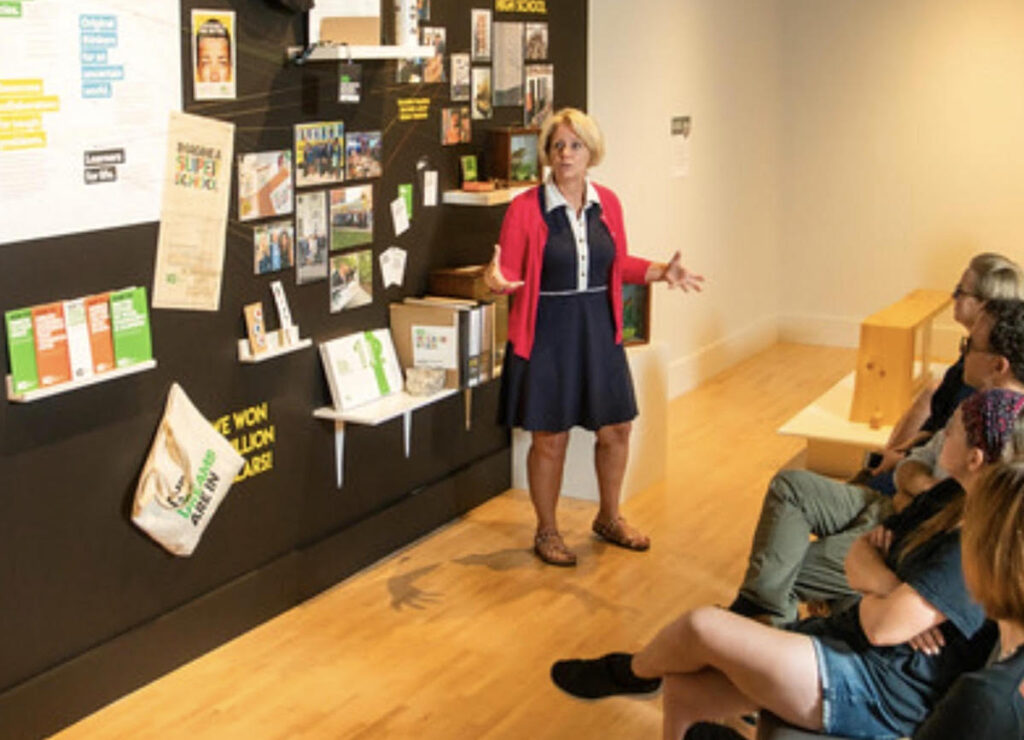
As a veteran teacher with thirty-three years of experience currently teaching at Kendall College of Art & Design of Ferris State University in Grand Rapids, Michigan, Cindy knows her stuff! According to Cindy, a great art educator is, “…one who fully understands the impact the arts have on the development of the human brain and passionately teaches like it matters.”
3. Be sure to rest and take care of yourself.
Knowing we teach so much more than art, our 2012 National Elementary Art Educator, Dr. Drew Brown, went a bit further and explained, “I am not sure there is a ‘typical’ day in the life of an art teacher. Every day I am an art teacher, facilitator, art coach, mentor, advisor, and strategist. My job is to encourage each student to develop his or her creative and artistic voice. I also help students make informed decisions. Every student has a different path to success, so no two days look alike for me, which is just one more reason why I love my job. It’s essential that we don’t forget to rest and treat ourselves well. As art educators, we have very challenging jobs, and we must be kind to ourselves.”
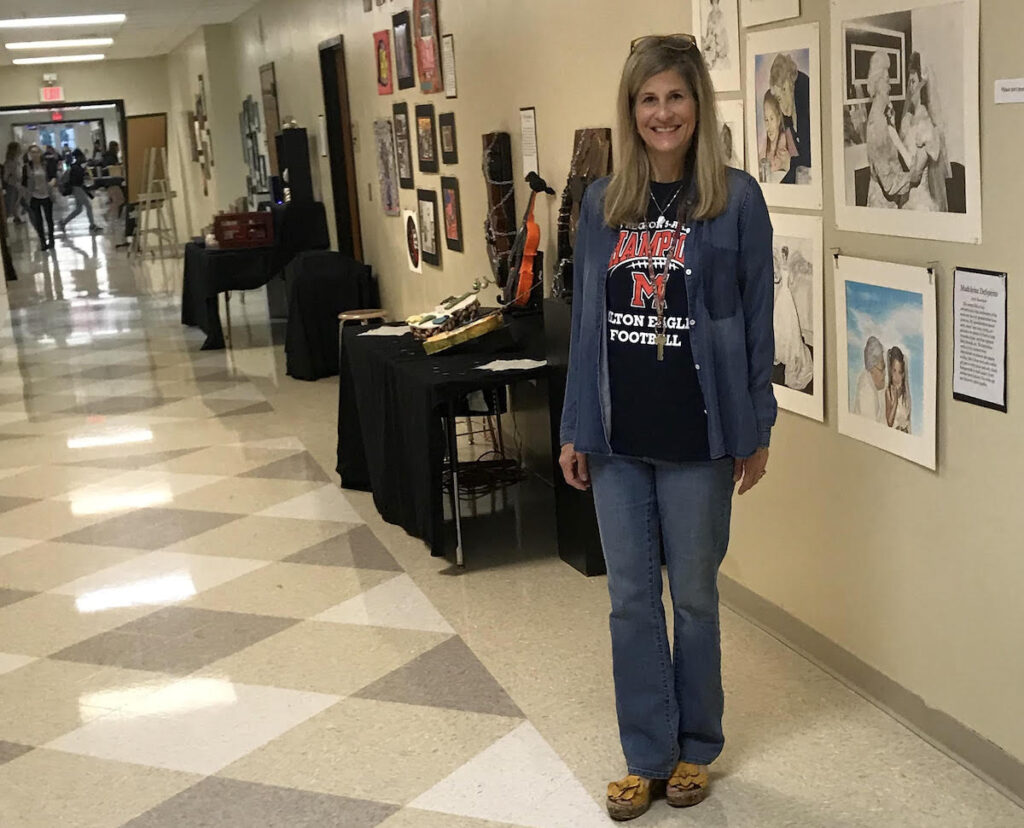
Drew taught at the elementary level for fourteen years and currently teaches at Milton High School in Milton, Georgia. She adds, “Keep things fresh and fun without getting caught in the status quo. It’s important to keep your curriculum relevant to your students.” This is great advice!
4. Remember to ignite empathy.
Denise Tullier-Holly, our 2007 National Elementary Art Educator of the Year, has been teaching at the Southeastern Louisiana University Laboratory School in Hammond, Louisiana for thirty years. Her philosophy of teaching is simple yet important, “I want my students to know the processes for making art, but ultimately, I want to ignite empathy. Empathy; that item in the affective domain which encourages the development of that inner person in all our students. Our students’ artmaking gives them a voice.”
Denise believes, “A great art educator is compassionate and caring with a command of varied art mediums as well as the ability to encourage thinking outside the box. The focus on each student finding their voice through art is prime.”
5. Enhance student potential to create life-long learners.
We all know art education is essential, but, Betsy Logan, our first National Middle-Level Art Educator in 1996, has this to say about the importance of art education: “The visual arts are a very important part of everyone’s life. I believe students who experience the visual arts become better learners and appreciate the world around them. The visual arts are a powerful tool for providing students insight into problem-solving situations and help them to become more informed citizens and patrons of the arts. Experience in the arts through teaching, leading, and learning greatly enhances every human being’s potential to become more informed life–long learners. As my students tell me all the time, ‘Art makes learning fun!'”
Betsy is retired after teaching K-12 art for thirty-eight years in Auburn, Alabama. Luckily for Alabama, she continues to teach online visual art courses for the state.
6. Passionately create your own art.
Art teachers need to know their craft. Nicole Brisco, our 2018 National Secondary Art Educator of the Year, believes the most important qualities that make an art educator strong, “…are flexibility, vision, innovation, and ever-changing ideas.” Her advice for art educators is to, “Push yourself artistically. I believe it is critical for high school students to see your passion for art outside of the classroom. Even if it is a sketchbook, always have something they can look at and see you live out what you ask of them.”
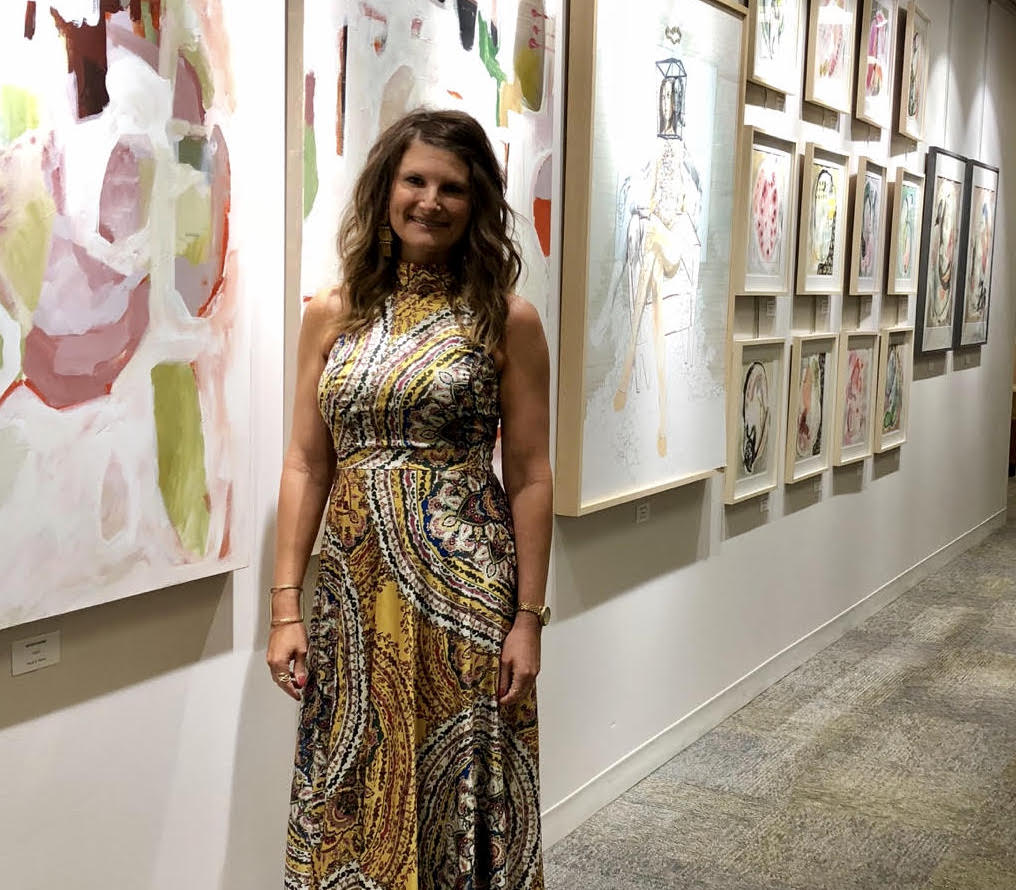
Nicole has been teaching at Pleasant Grove High School in Texarkana, Texas for twenty-one years and continues to share her teaching successes with art educators everywhere.
If you want to learn directly from Nicole, check out her PRO Learning Packs!
7. Promote and advocate for your students.
Kathleen Petka, our 2012 Outstanding National NAHS Sponsor of the Year, has spent the past fifteen years teaching art at Walton High School in Cobb County, Georgia. She believes a great educator is, “…someone who is passionate about art and loves inspiring and working with students. It is a tough job but so worth it! Promote your students’ successes and your program. Teach others the importance of art.”
8. Become critically engaged in the pursuit of knowledge.
I have to mention my friend, James Rees. His 2016 National Pacific Art Educator of the Year award came the same year he was named the National Secondary Art Educator! He currently teaches at Provo High School and also teaches graduate courses at several universities. He has been in education for twenty-seven years and is a constant inspiration.
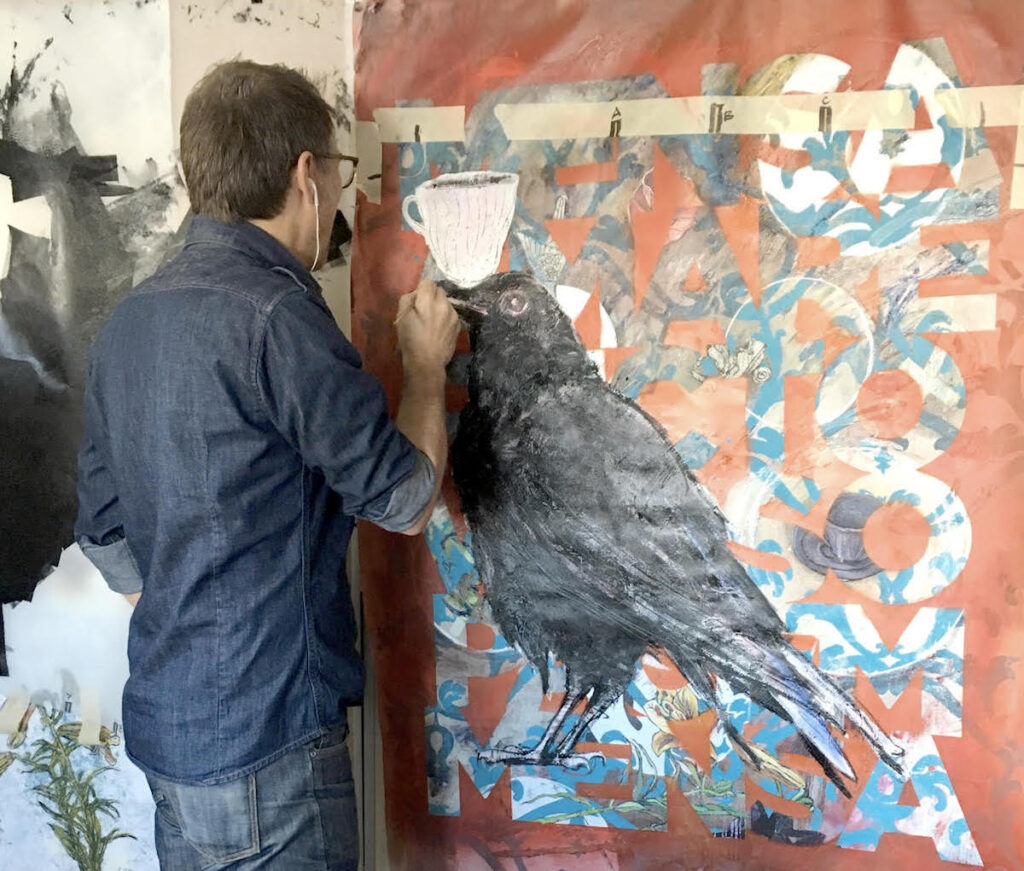
I enjoyed reading his philosophy of teaching. James wrote, “An important part of my role as a teacher is to help students see the relevance of what we do in class and how it ties to their lives outside of the classroom. Making significant connections is important, and seeing one’s relevance within the vast array of the visual culture in which we live is essential. While I instruct students about the histories, theories, aesthetics, and techniques of art, I provide students with something equally valuable; how to think and become critically engaged in the pursuit of knowledge. It is often too easy to get entangled in the technique, the how, instead of the why and what of art. I want to engage students on a personal level and have them confront their own thinking through art.”
James not only teaches but along with his students, he also runs an art gallery. James is teaching real-world learning daily.
9. Once you’re comfortable in your teaching, get involved.
Being involved in your state art education association is so important! Kirby Meng, our 2015 National Southeastern Art Educator, has been involved in the Georgia Art Education Association for twenty-one years and she states, “You have to be comfortable in your teaching to be willing to take on other areas of involvement, in your state art education association and at the national level. You have to have some extra energy to put into those other areas, and you don’t if you are struggling as a teacher. I had opportunities to be an arts leader in my state and the national level because I was excited by other art teachers who made me want to be more involved.”
Kirby has been in education for thirty-one years teaching at every level from elementary through higher ed. She currently works with her county art educators as the Fine Arts Teacher on Special Assignment in Henry County, Georgia and continues to be a mentor to many.
10. Be a leader.
Dr. Deb Greh, our 2007 National Eastern Art Educator of the Year, spent forty-eight years teaching high school and higher education in New Jersey. She has been involved in her state art education association for thirty years, serving in many capacities, including as president. She has also been the convention chair of the National Art Education Association convention…twice!
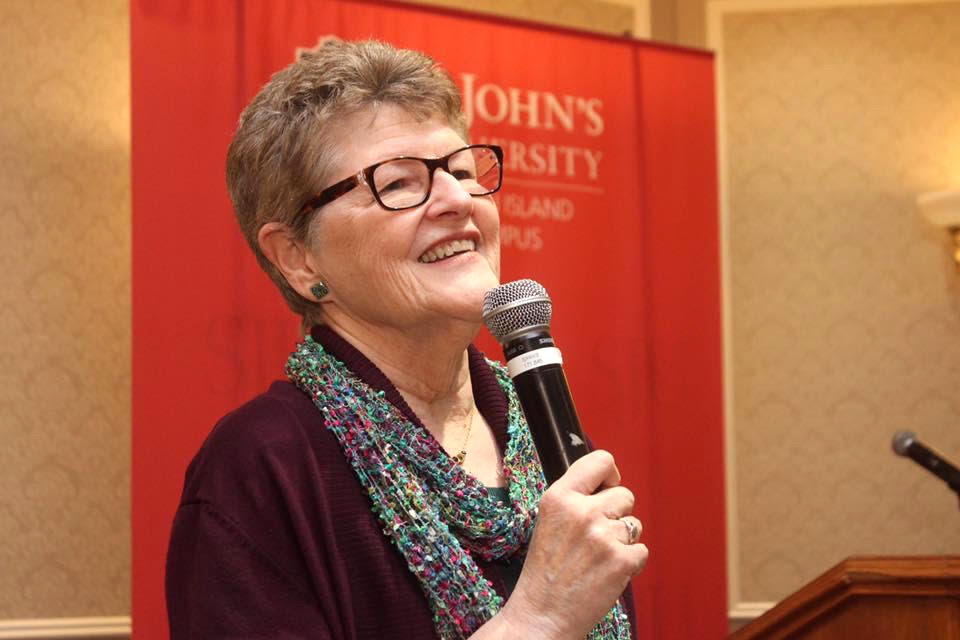
Deb believes, “A successful art teacher is knowledgeable in all aspects of art, skilled in a few areas, and most importantly, cares about students. They also need to advocate not just for programs, but for students, acting as a leader in the field.”
All of the other award winners also talked about the importance of getting involved in art ed organizations. Kirby Meng echoed Deb beautifully encouraging art teachers to, “Get involved in your state arts organization. If you are struggling, there are people there who can help you. If you aren’t struggling, then this is a great place for you to step up and be a leader. There are teachers out there who need your help!”
It’s easy to see what these exceptional art educators have in common; they are committed and passionate about art education! They are involved in their state art education associations, and several are quite involved in the National Art Education Association as well. And they are all willing to share their successes to benefit students. That’s what these awards are all about! To recognize hard-working art educators who are committed to great teaching and leadership.
I thank them for their service, and for their continued friendship.
Are you involved in your state art education association?
Have you considered nominating anyone for a local, state, regional or national award?
Magazine articles and podcasts are opinions of professional education contributors and do not necessarily represent the position of the Art of Education University (AOEU) or its academic offerings. Contributors use terms in the way they are most often talked about in the scope of their educational experiences.





